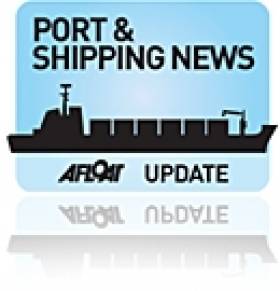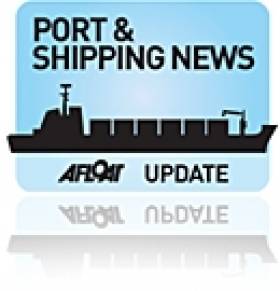Displaying items by tag: Irish Ports Policy
Irish Ports Association Welcomes New Ports Policy
#Ports&Shipping- The Irish Ports Association (IPA) has welcomed the publication by Leo Varadkar, TD, Minister for Transport of the new national ports policy which sets out the policy framework for the future development of the sector, writes Dredgingtoday.com
IPA which is the representative body for the Irish ports sector and an affiliate of IBEC whose Head of Trade and Transport Policy, Pat Ivory said: "Ireland's commercial ports are key pieces of national and regional infrastructure, which will play a key role in economic recovery by facilitating both trade and tourism. It is essential that we have coordinated action across Government departments in implementing the strategy.
"It is important that the alignment of Ports of Regional Significance with local authorities be undertaken in a way that preserves the commercial focus of the ports' operations. This will require harnessing the necessary commercial expertise at local authority level and a clear decision-making framework to be developed to facilitate future port development."
#Ports&Shipping -The latest IMDO Weekly Shipping Market Review reports that in the Irish Shipping sector there are plans under the New Ports Policy to radically overhaul Ireland's commercial ports and give Government a more hands-on role in the maritime ports sector were announced last week by the Department of Transport, Tourism & Sport.
The new National Ports Policy aims to harness the potential of every port in Ireland. Shareholders will be encouraged to take an activist approach to ensure the State gets best value from these crucial facilities, whether that shareholder is the Government or the local authority.
Container Market: Ultra-large containership deliveries slowed in the first few months of the year, sparking claims of a lower than forecast delivery rate for 2013, Lloyd's Loading List relayed last week. The latest report from shipbroker Braemar Seascope shows that only three containerships with capacity of 10,000 TEU or larger have been delivered in the first two months of the year. This compares with eight vessels of more than 10,000 TEU delivered during the last two months of 2012.
Shipping Industry: Overall confidence levels in the shipping industry recovered to their highest level for two years in the three months ended February 2013, according to the latest survey from Moore Stephens. There was improved expectation of freight rate increases over the next twelve months, particularly in the dry bulk sector, and greater likelihood of new investment in the industry.
To read more of each of the above stories and other news from the IMDO Shipping Markets Review for Week 13, click HERE to be viewed or downloaded as a PDF






























































